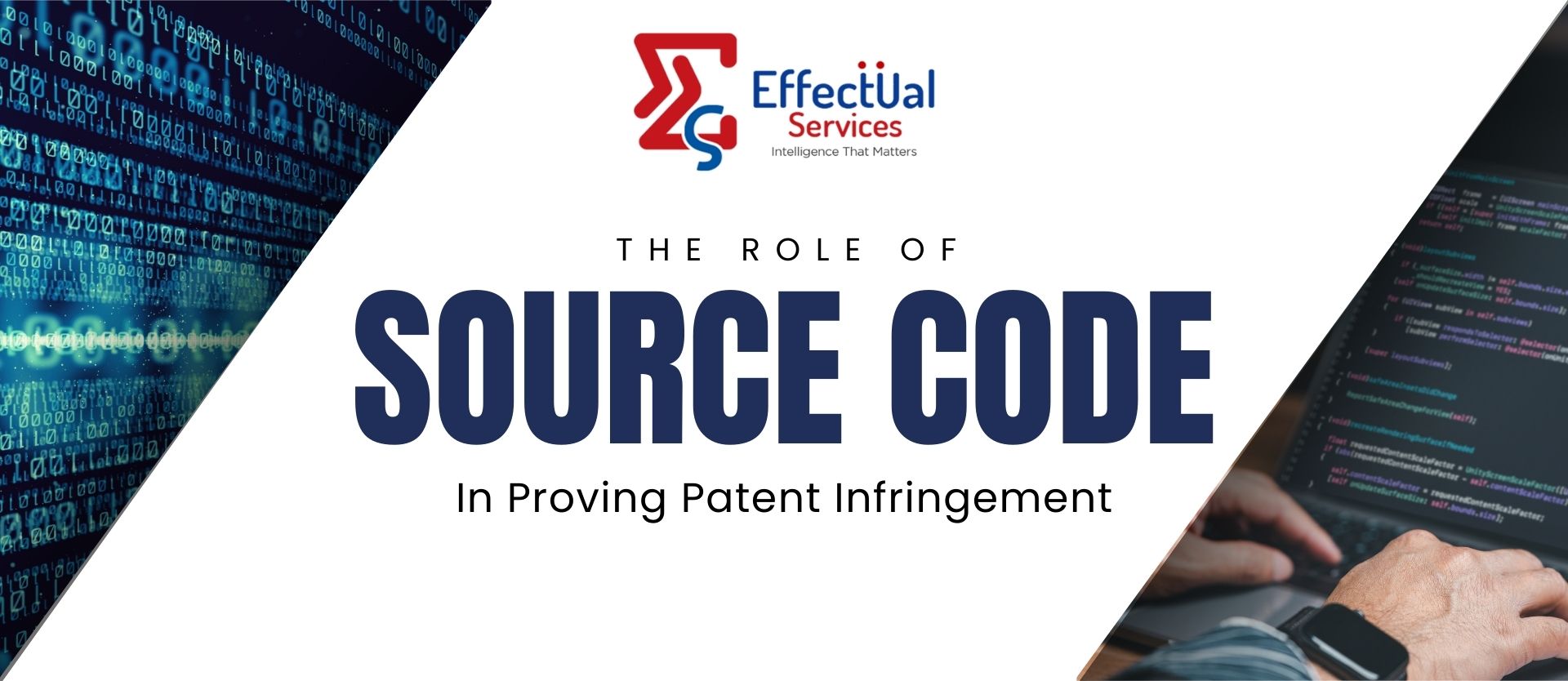The Role of Source Code in Proving Patent Infringement

Intellectual property relies on innovation, including software patents. Analyzing source code can uncover the actual implementation of claimed features. Patent owners can bolster their infringement cases with code similarities, while defendants can refute claims using their source code. As software patent disputes become complex, source code examination is essential for identifying potential infringement and supporting legal action. Learn how source code analysis proves patent infringement in software cases through literal infringement and doctrine of equivalents strategies.
What is Source Code?
- Source code is a human-readable set of instructions for a software program.
- It serves as a blueprint, outlining the program's functionality.
- The code details operations and procedures.
- It embodies innovation, accurately reflecting the real implementation of claimed features.
Proving Infringement and Defensive Strategies in Software Patent Analysis
Proving Infringement: Literal Infringement and Doctrine of Equivalents
The two primary frameworks for proving patent infringement are literal infringement and the doctrine of equivalents.
- Literal Infringement: It occurs when all elements of a patent claim are present in the accused software. Source code review enables direct comparison with patent claims. This provides clear evidence of infringement.
- Doctrine of Equivalents: The Doctrine of Equivalents allows for infringement even if the software doesn't directly match patent claims, applying when it achieves the same goal similarly. Source code review can demonstrate compliance with these criteria.
Defensive Analysis
Source code review is essential for defense, enabling companies to proactively check for patent violations and avoid costly disputes. A thorough analysis can also help demonstrate that the software doesn’t use patented methods when infringement is suspected.
Beyond the Code: Additional Considerations
Although source code review is an effective tool, other factors also come into play. Here are a few more things to think about:
- Open-source code: Infringement claims may be dismissed if the accused software uses open-source code with permissive licenses. Understanding the licensing terms is crucial.
- Focus on the claims: Not every detail in the source code is relevant; focus on sections that implement the features outlined in the patent claims, as similarities in other areas may be insignificant.
Conclusion
Source code review is vital in software patent cases for proving and defending against infringement allegations. It provides a solid basis for comparing accused software with patented inventions, clarifying the functionality and application of specific techniques. In the age of AI-generated code, this review remains essential for both enforcing patent rights and defending against claims.
About Effectual Services
Effectual Services is an award-winning Intellectual Property (IP) management advisory & consulting firm offering IP intelligence to Fortune 500 companies, law firms, research institutes and universities, and venture capital firms/PE firms, globally. Through research & intelligence we help our clients in taking critical business decisions backed with credible data sources, which in turn helps them achieve their organisational goals, foster innovation and achieve milestones within timelines while optimising costs.
We are one of the largest IP & business intelligence providers, globally serving clients for over a decade now. Our multidisciplinary teams of subject matter experts have deep knowledge of best practices across industries, are adept with benchmarking quality standards and use a combination of human and machine intellect to deliver quality projects. Having a global footprint in over 5 countries helps us to bridge boundaries and work seamlessly across multiple time zones, thus living to the core of our philosophy - Innovation is global, so are we !!!
Solutions Driving Innovation & Intelligence
Enabling Fortune 500's, R&D Giants, Law firms, Universities, Research institutes & SME's Around The Globe Gather Intelligence That
Protects and Nurtures Innovation Through a Team of 250+ Techno Legal Professionals.


